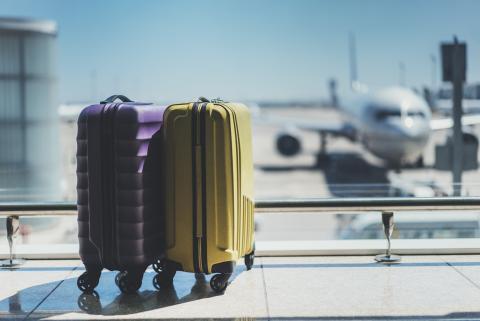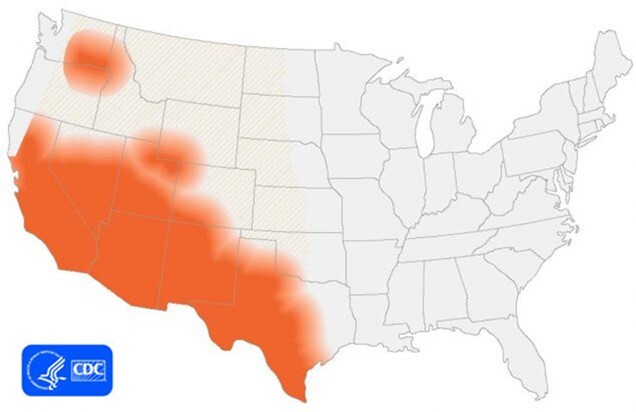
This update is being sent to members of the Wisconsin Travel Health Network.
Global Health Update
Updated COVID-19 vaccines
On September 11, the U.S. Food and Drug Administration (FDA) approved and authorized updated COVID-19 vaccines formulated to more closely target currently circulating variants and to provide better protection against serious consequences of COVID-19, including hospitalization and death. The Wisconsin Department of Health Services (DHS) supports the Centers for Disease Control and Prevention (CDC) recommendation that:
-
Individuals 5 years of age and older regardless of previous vaccination are eligible to receive a single dose of the updated Pfizer or Moderna vaccine at least two months after the last dose of any COVID-19 vaccine.
-
Individuals 6 months through 4 years of age who have previously been vaccinated against COVID-19 are eligible to receive one or two doses of the updated Pfizer or Moderna COVID-19 vaccine (timing and number of doses to administer depends on the previous COVID-19 vaccine received).
-
Immunocompromised individuals and unvaccinated children 6 months through 4 years of age are eligible to receive additional doses and should check with their health care provider.
Please encourage travelers to get an updated COVID-19 vaccine before their trip as one layer of protection from COVID-19 for themselves and others.
CDC Travel Health Notices for international travelers
Level 2 – Practice Enhanced Precautions
During September the CDC posted the following level 2 travel notices:
Diphtheria
The CDC has issued and updated level 2 notices for diphtheria in several international destinations including Vietnam, Nigeria, Guinea, and Niger. The CDC recommends that all travelers 2 months and older be up to date on their diphtheria vaccine before traveling to any of the affected areas. Individuals who are not fully vaccinated or have not received a booster dose within five years may need a booster before traveling. Individuals should meet with a health care professional to discuss their medical situation prior to travel. When traveling to affected areas, travelers should avoid individuals who are sick and avoid touching open wounds of others. If a traveler feels sick, they should seek medical care immediately.
Global Polio (updated 9/11/23)
The CDC issued a level 2 notice for global polio. Polio has been eliminated from most of the world, but some international destinations have circulating poliovirus. Before any international travel, adults and children should make sure they are up to date on polio vaccines. Before travel to any destination with poliovirus detected within the last 12 months, adults may additionally receive a single, one-time booster dose of inactivated polio vaccine (IPV). In countries where there is an increased risk of exposure to poliovirus, travelers may be required by the government of that country to show proof of polio vaccination when departing that country.
Level 1 – Practice Usual Precautions
During September the CDC posted the following level 1 travel notices:
Disease Spotlight: Valley Fever
Coccidioidomycosis or Valley Fever is an infection caused by the Coccidioides fungus. This fungus primarily lives in soil and dust in the southwestern United States but was also recently found in the southeastern part of Washington state. Across the world, Coccidioides is found in arid regions of Mexico and Central and South America. Though the fungus is not found in Wisconsin soil, state and local health departments receive at least two dozen reports annually of Wisconsinites developing this travel-associated disease.
The disease initially resembles flu or pneumonia-like respiratory illness which often leads to misdiagnoses of community-acquired pneumonia in patients with Valley Fever. Many people have mild self-resolving symptoms. However, spreading of infection can involve multiple organ systems, and lead to chronic fatigue (tiredness) or other illness.
Who is at risk?
Because this disease is travel-associated, those who have visited areas where Coccidioides are found are at highest risk for exposure and developing Valley Fever. This fungus can infect a person when soil containing Coccidioides is disturbed and inhaled. Therefore, traveling to places where Coccidioides are found and taking part in activities that disturb soil can increase someone’s risk in getting Coccidioidomycosis.
People are at especially high risk of developing a severe form of this disease if they have a weakened immune system, are pregnant, have diabetes, or are Black or Filipino.
 
What are the symptoms?
Common signs and symptoms of coccidioidomycosis include:
-
Flu-like signs and symptoms
- Fatigue (tiredness)
- Fever, chills, or night sweats
- Chest pain
- Shortness of breath
- Cough
- Joint pain
- Headache
- Erythema nodosum or erythema multiforme rash (may resemble measles rash or hives)
- Chest radiograph suggesting pneumonia, hilar adenopathy, pleural effusion, or pulmonary infiltrates (usually one lung affected)
Uncommon signs and symptoms may include:
-
Bone and joint pain
-
Meningitis
- Involvement of intestines and lymph nodes
Coccidioides spores circulate in the air when soil and dust containing them are disturbed. When the spores are inhaled by a person, they can develop into spherules. These spherules then release endospores that spread within the lungs or to other organs and become new spherules.
This fungal infection is acquired only from the environment and is not contagious between people.
Serologic testing is often the initial diagnostic approach, but in Wisconsin where Blastomyces and Histoplasma are endemic, confirmation usually requires additional tests.
-
Detection of Coccidioides IgM antibodies in serum, cerebrospinal fluid (CSF), or other body fluid by EIA (enzyme immunoassay), ID (immunodiffusion), or TP (tube precipitin)
-
Detection of Coccidioides IgG antibodies in serum, CSF, or other body fluid by ID, EIA, or CF (complement fixation testing)
-
Culture of Coccidioides from a clinical specimen
-
Identification of characteristic Coccidioides endospore-containing spherules by histopathology, or Coccidioides-specific nucleic acid in a clinical specimen by validated assay
Most patients with Valley Fever make a full recovery and have life-long immunity. Patients who are immunocompromised are at risk for severe and recurring illness if not promptly diagnosed and treated. Treatment is usually achieved with a long-term course of antifungal medications such as fluconazole or itraconazole for 3–6+ months. Amphotericin B may also be considered in a severe case.
|